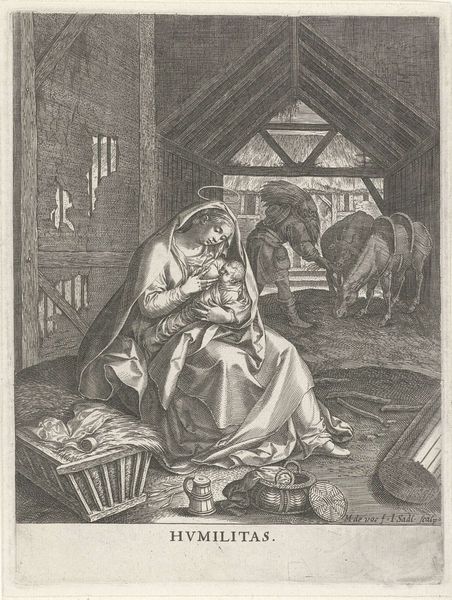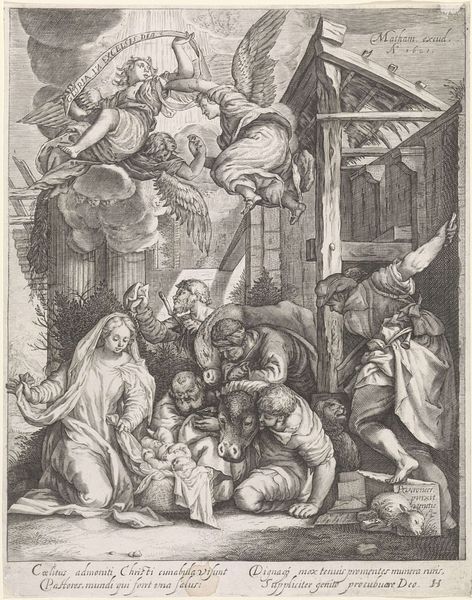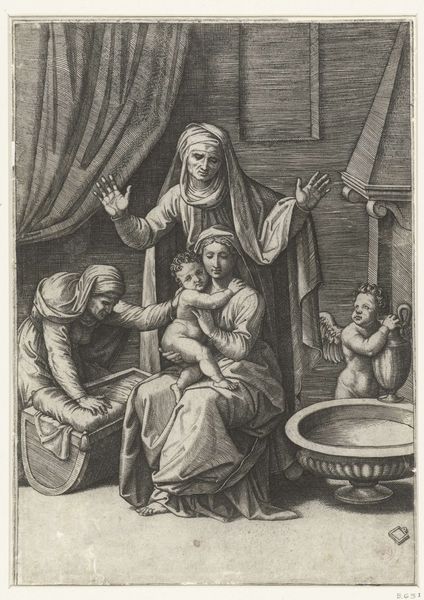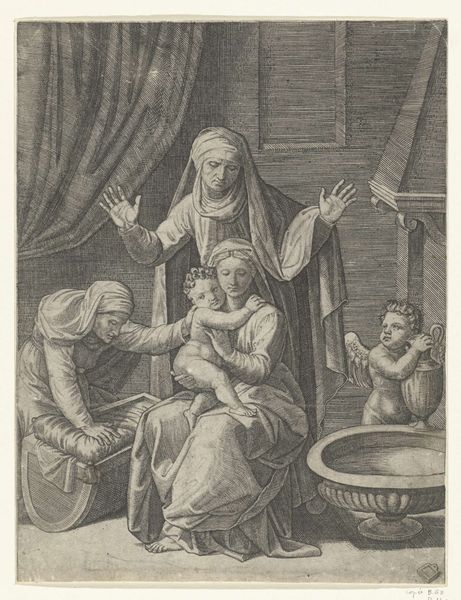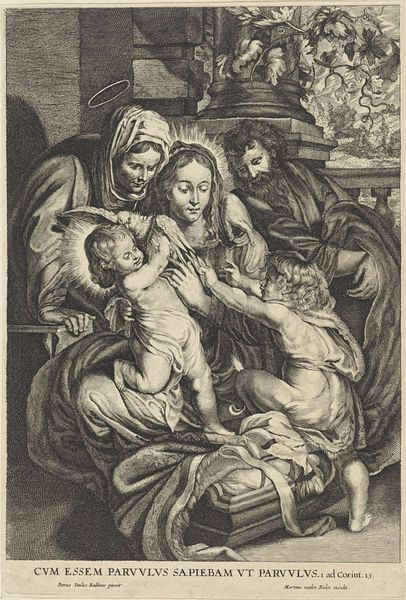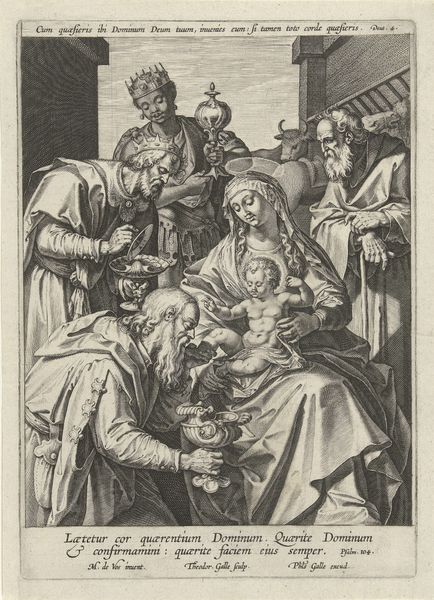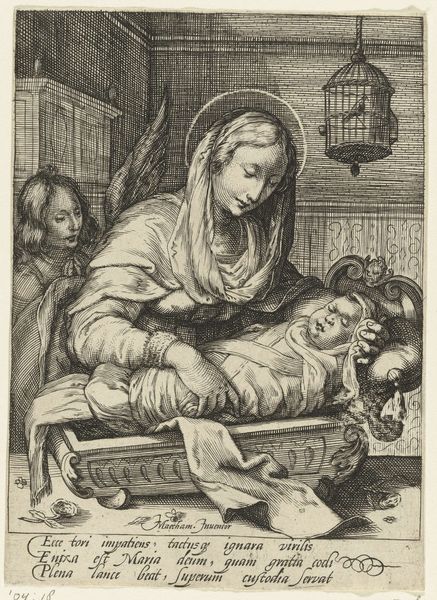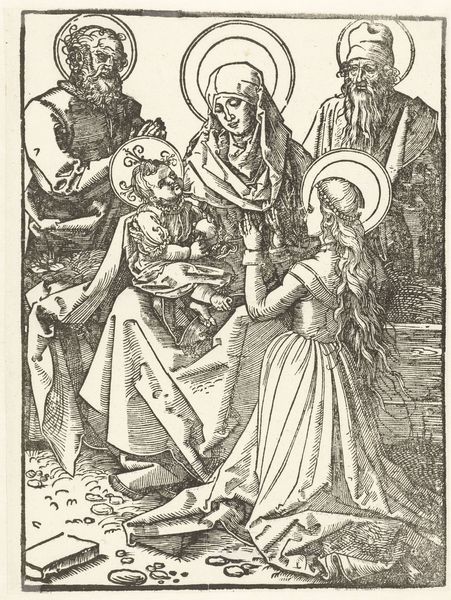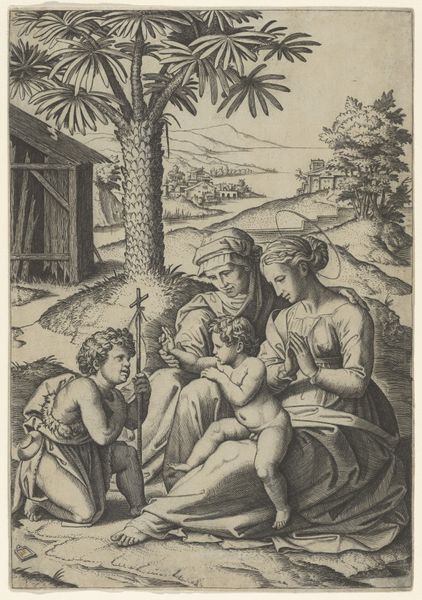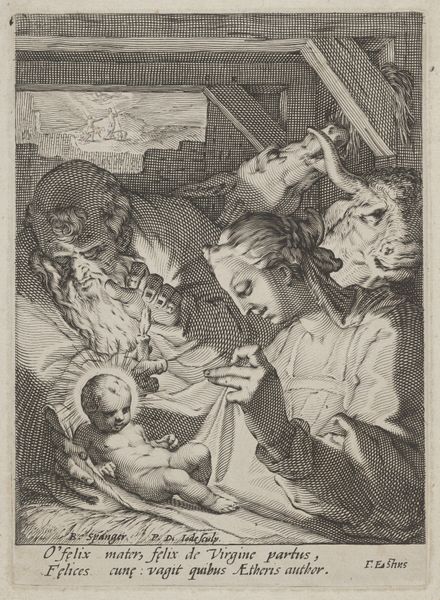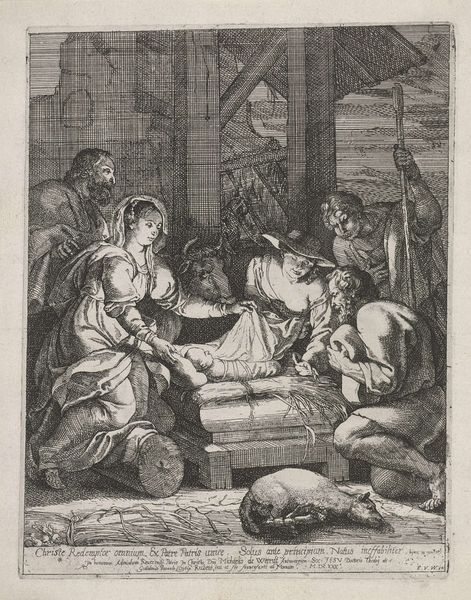
print, engraving
#
narrative-art
#
baroque
# print
#
old engraving style
#
figuration
#
line
#
history-painting
#
engraving
#
realism
Dimensions: width 54 mm, height 90 mm
Copyright: Rijks Museum: Open Domain
This print, depicting the birth of Christ, was made by Theodoor Galle around the turn of the 17th century. The printmaking process – likely engraving – involved meticulous labor. Galle would have used specialized tools to carve lines into a metal plate, applying ink to capture fine details like the folds of Mary's robes and the texture of the stable. Consider the social context of printmaking at this time. It was an artisanal activity, yet also increasingly industrialized. Prints like this were made in multiples and distributed widely, connecting to emerging markets for art. The image itself reflects a laboring-class aesthetic, portraying a humble scene: Joseph tending to the animals, Mary nursing the infant Jesus in a simple stable. This visual emphasis on labor and humility may reflect the values of the intended audience for these prints, who were being sold to a wide and diverse audience through an expanding commercial market. Looking at this print, it is important to remember that materials, making, and context are crucial to understanding the full meaning of an artwork.
Comments
No comments
Be the first to comment and join the conversation on the ultimate creative platform.
